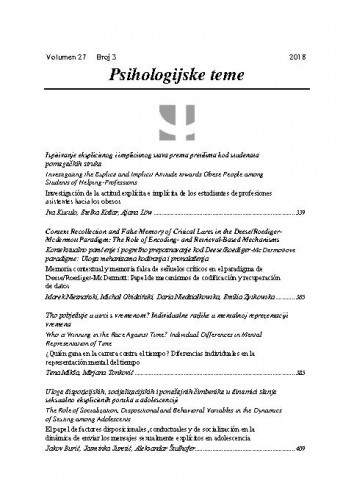The Spatial-Musical Association of Response Codes (SMARC) effect consists in faster and more accurate responses to low (vs. high) pitched tones when they are executed in the bottom/left (vs. top/right) space. This phenomenon has many similarities with the Spatial-Numerical Association of Response Codes (SNARC) effect which, however, has been more extensively investigated and theoretically debated. The first theoretical account of the SNARC effect suggests the existence of a direct mapping between the position of a number on a mental number line and the external space of response execution. Conversely, following accounts claim that numbers are automatically categorized in two opposing categories (e.g., small vs. large) and then associated to response alternatives (left vs. right). A modified task, consisting in unimanual close/far responses relative to a reference key, has been employed to disentangle between the opposite theoretical accounts of the SNARC effect. However, this modified task has never been applied to pitch height and currently there are no specific theoretical accounts for the SMARC effect. The aim of this study is to fill this gap of knowledge. Contrary to what has been found for numbers, our data are more in line with the "direct mapping" account and suggests a linear representation of pitch height. Our data suggest that SNARC and SMARC effects might have different origins and might require different theoretical accounts.; Efekt se prostorno-glazbene povezanosti kodova za odgovor (engl. spatial-musical association of response codes – SMARC) odnosi na potvrđenu pojavu bržeg i točnijeg reagiranja na niske, odnosno visoke tonove kada se odgovor da u donjem ili lijevom, odnosno u gornjem ili desnom dijelu prostora. Ova pojava ima mnogo sličnosti s efektom prostorno-numeričke povezanosti kodova za odgovor (engl. spatial-numerical association of response codes – SNARC), koji je u mnogo većoj mjeri istražen i teorijski razmatran. Prva teorija koja je pokušala objasniti efekt SNARC pretpostavlja da se položaj broja na mentalnoj numeričkoj crti izravno preslikava na vanjski prostor u kojem izvršavamo motorni odgovor. Suprotno tome, kasnija objašnjenja pretpostavljaju da se brojevi automatski kategoriziraju u dvije suprotstavljene kategorije (npr. mali nasuprot veliki), a zatim se povezuju s alternativama za odgovor (lijevo nasuprot desno). Kako bi se razlučilo koja teorija bolje objašnjava efekt SNARC, napravljena je modifikacija zadatka u kojem se odgovor bliže/dalje u odnosu na referentnu tipku daje jednom rukom. Međutim, modificirani zadatak nikad nije primijenjen na visine tonova i dosad nije predloženo specifično teorijsko objašnjenje efekta SMARC. Suprotno su prethodnim istraživanjima s brojevima naši rezultati više u skladu s hipotezom o izravnom preslikavanju i upućuju na linearnu reprezentaciju visine tona te upućuju na zaključak da su efekti SNARC i SMARC u osnovi različiti fenomeni, pa samim time zahtijevaju i različito teorijsko objašnjenje.; El efecto de la asociación espacio-musical de códigos para la respuesta (inglés: SMARC) consiste en las respuestas más rápidas y más precisas a tonos bajos (vs. altos) cuando se realizan en el espacio de abajo/izquierda (vs. arriba/derecha). Este fenómeno tiene mucho en común con el efecto de la asociación espacio-numérica de códigos para la respuesta (inglés: SNARC) que en todo caso se ha investigado más exhaustivamente y discutido teoréticamente. La primera teoría que intentó explicar el efecto SNARC supuso que la posición del número en la línea numérica mental se refleja directamente al espacio exterior en el que se ejerce la respuesta. Al contrario, los intentos posteriores de explicar el efecto afirman que los números se categorizan automáticamente en dos categorías opuestas (p. ej. pequeño vs. grande) y luego se asocian con las alternativas de respuestas (izquierda vs. derecha). Para aclarecer cuál de las dos teorías opuestas explica mejor el efecto SNARC, se modificó la tarea en la que se responde con una mano si está más cerca o lejos de la clave de referencia. Sin embargo, esta tarea modificada nunca se ha aplicado a la altura de tonos y en este momento no hay explicaciones teoréticas específicas del efecto SMARC. El objetivo de este trabajo es llenar este hueco en nuestro saber. Al contrario de aquello que se comprobó para los números, nuestros resultados se asocian más con la hipótesis del reflejo directo e indican la representación linear de la altura de tono. Nuestros datos sugieren la posibilidad de que los efectos SNARC y SMARC tengan un origen diferente y requieran diferentes explicaciones teoréticas.
Sažetak

 Psihologijske teme : 27,3(2018) / glavna i odgovorna urednica Barbara Kalebić Maglica.
Psihologijske teme : 27,3(2018) / glavna i odgovorna urednica Barbara Kalebić Maglica.